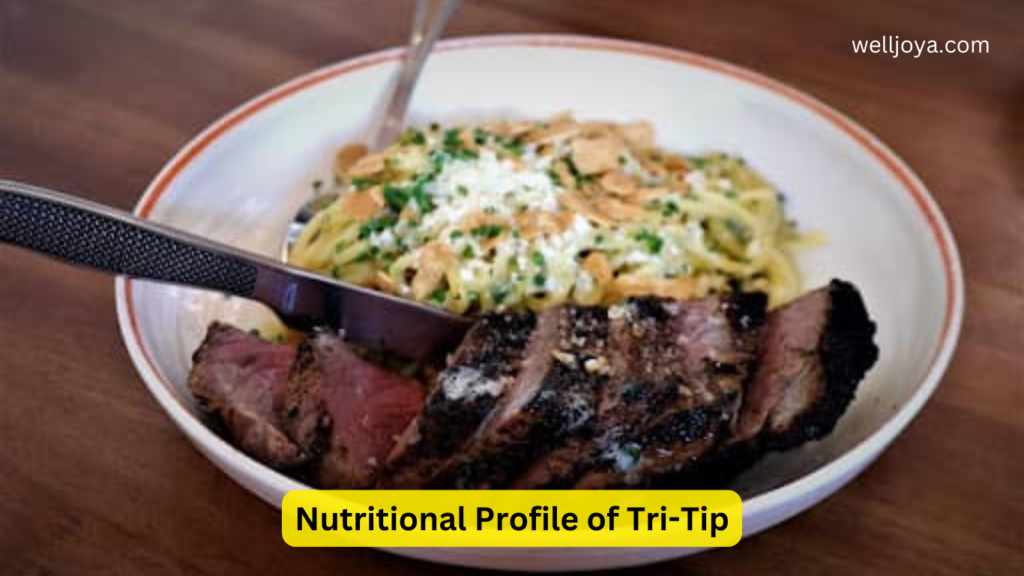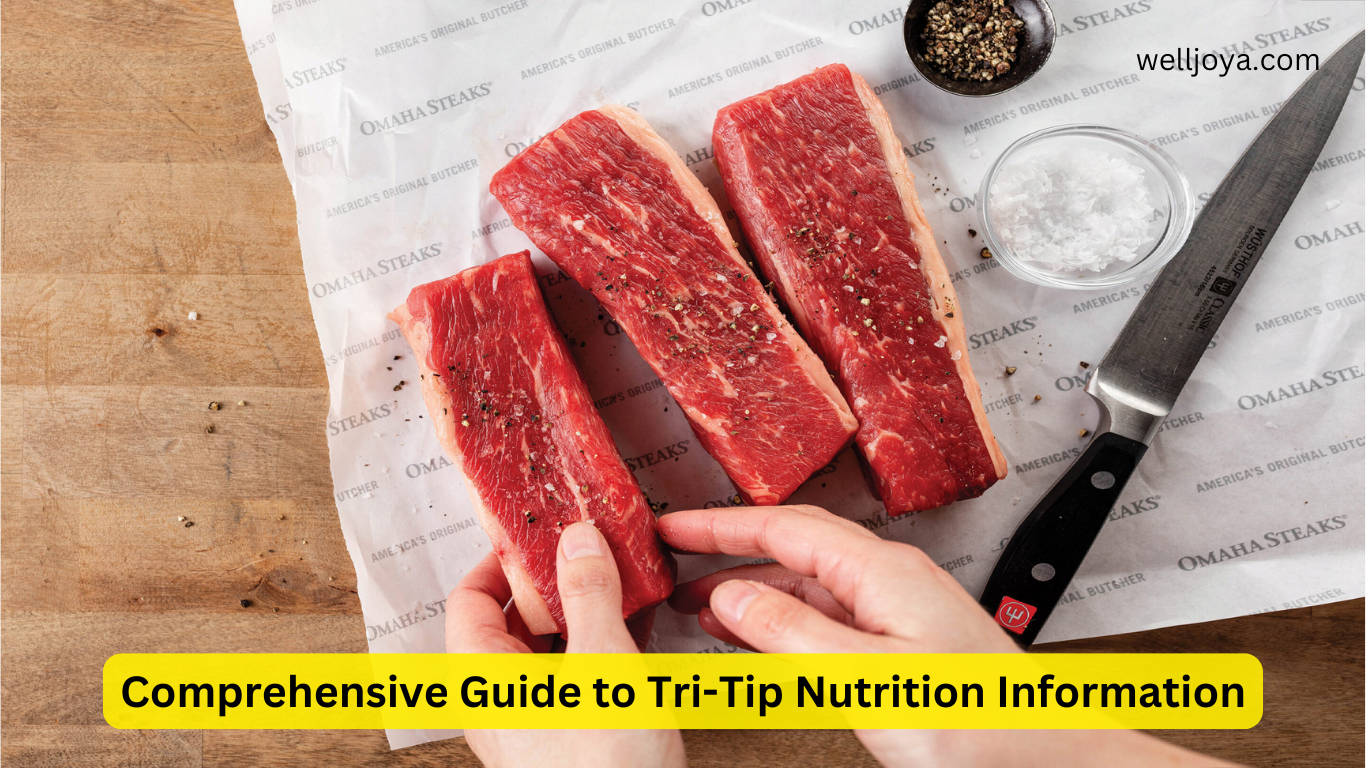Comprehensive Guide to Tri-Tip Nutrition Information
Tri-Tip Nutrition Information is a popular cut of beef, celebrated for its rich flavor, tenderness, and versatility. Whether you’re grilling, roasting, or smoking this triangular cut from the bottom sirloin, tri-tip offers a balance of taste and nutrition that makes it a favorite among meat lovers. In this article, we will delve into the detailed nutrition information of tri-tip, discuss its health benefits, and offer tips on how to incorporate it into a healthy diet.
What is Tri-Tip?
Tri-tip is a triangular cut of beef sourced from the bottom sirloin of the cow. It weighs between 1.5 to 2.5 pounds and is known for its robust flavor, which can be enhanced through various cooking methods such as grilling, roasting, or smoking. Tri-tip is relatively lean compared to other cuts of beef, making it a healthier option for those who enjoy red meat but are mindful of their fat intake.
Nutritional Profile of Tri-Tip

Understanding the nutritional content of tri-tip is crucial for those who want to make informed dietary choices. Below is the nutrition information for a typical 3-ounce (85-gram) serving of cooked tri-tip:
Calories: 180-200 kcal
Protein: 23-25 grams
Total Fat: 10-12 grams
Saturated Fat: 3-4 grams
Monounsaturated Fat: 4-5 grams
Polyunsaturated Fat: 0.5 grams
Cholesterol: 70-80 mg
Sodium: 50-70 mg (without added salt)
Iron: 2 mg (10% of the Daily Value)
Vitamin B12: 1.5 mcg (25% of the Daily Value)
Zinc: 4 mg (25% of the Daily Value)
Potassium: 270 mg (6% of the Daily Value)
Protein Content
Tri-tip is a high-protein cut of beef, providing 23-25 grams of protein per 3-ounce serving. Protein is essential for muscle repair, growth, and overall body maintenance. For individuals engaging in regular physical activity, including tri-tip in their diet can help meet their protein requirements.
Fat Content
While tri-tip is relatively lean, it still contains 10-12 grams of fat per serving, with 3-4 grams of saturated fat. The fat content contributes to the rich flavor and juiciness of the meat. However, it’s essential to monitor portion sizes to manage overall fat intake, especially for those concerned about heart health.
Cholesterol
A 3-ounce serving of tri-tip contains approximately 70-80 mg of cholesterol. While this amount is moderate, individuals with specific dietary restrictions or those managing cholesterol levels should consider this when planning their meals.
Micronutrients
Tri-tip is a good source of essential micronutrients, including iron, zinc, and vitamin B12. Iron is crucial for oxygen transport in the blood, zinc supports immune function, and vitamin B12 is vital for nerve function and the production of red blood cells. These nutrients are particularly important for individuals who may be at risk of deficiencies, such as those following a restrictive diet.
Health Benefits of Tri-Tip
1. High-Quality Protein Source
Tri-tip provides a significant amount of high-quality protein, which is necessary for muscle growth, tissue repair, and the production of enzymes and hormones. For athletes or individuals aiming to increase their protein intake, tri-tip is an excellent option.
2. Rich in Essential Nutrients
The iron, zinc, and vitamin B12 found in tri-tip are essential for maintaining various bodily functions. Iron supports energy levels and cognitive function, zinc boosts the immune system, and vitamin B12 is important for maintaining a healthy nervous system.
3. Supports Weight Management
Despite being a cut of red meat, tri-tip can be part of a weight management plan due to its relatively low-calorie content and high protein level. Protein-rich foods like tri-tip can increase satiety, helping to reduce overall calorie intake and support weight loss or maintenance.
4. Boosts Energy Levels
The combination of protein, iron, and B vitamins in tri-tip helps boost energy levels and combat fatigue. Including tri-tip in your diet can support physical performance, making it a valuable addition for active individuals.
Cooking Tips for Maximizing Nutrition
1. Choose Lean Cuts
When purchasing tri-tip, look for cuts with minimal visible fat. Trimming any excess fat before cooking can further reduce the fat content and make the dish healthier.
2. Opt for Healthy Cooking Methods
Grilling, roasting, or smoking tri-tip are healthy cooking methods that help preserve the meat’s nutritional value while adding flavor. Avoid frying or using heavy sauces, as these can increase the calorie and fat content of the dish.
3. Season with Herbs and Spices
Instead of relying on high-sodium marinades, use herbs and spices to season your tri-tip. This approach adds flavor without increasing the sodium content, making the dish heart-healthier.
4. Pair with Vegetables
Balance your meal by pairing tri-tip with a variety of vegetables. Vegetables provide fiber, vitamins, and minerals that complement the nutrients found in tri-tip, making for a well-rounded and nutritious meal.
FAQ: Tri-Tip Nutrition Information
1. Is tri-tip a healthy cut of beef?
Yes, tri-tip is a relatively lean cut of beef that provides a good balance of protein, vitamins, and minerals. When prepared using healthy cooking methods, it can be a nutritious part of a balanced diet.
2. How does tri-tip compare to other cuts of beef?
Tri-tip is leaner than cuts like ribeye or brisket, but it still offers a rich flavor. It’s a good option for those who want a flavorful cut of beef with moderate fat content.
3. What are the best ways to cook tri-tip?
Grilling, roasting, or smoking are popular methods for cooking tri-tip. These methods enhance the meat’s natural flavor without adding unnecessary fats or calories.
4. How many calories are in a serving of tri-tip?
A 3-ounce serving of cooked tri-tip contains approximately 180-200 calories, depending on the specific preparation method and cut.
5. Is tri-tip high in cholesterol?
Tri-tip contains about 70-80 mg of cholesterol per 3-ounce serving. While it’s not excessively high, individuals managing their cholesterol levels should be mindful of portion sizes.
6. Can tri-tip be part of a weight loss diet?
Yes, tri-tip can be included in a weight loss diet due to its high protein content and moderate calorie count. Pairing it with vegetables and using healthy cooking methods can help manage calorie intake.
7. What nutrients are found in tri-tip?
Tri-tip is rich in protein, iron, zinc, and vitamin B12. These nutrients are essential for muscle function, immune support, and energy production.
8. How can I reduce the fat content in tri-tip?
To reduce the fat content, trim any visible fat before cooking and choose cooking methods that allow fat to drain away, such as grilling or roasting.
9. What are the benefits of eating tri-tip?
Eating tri-tip provides high-quality protein, essential vitamins and minerals, and supports muscle growth, energy levels, and overall health. It’s also versatile and can be prepared in various healthy ways.
10. Is tri-tip suitable for a heart-healthy diet?
When prepared with minimal added fat and sodium, tri-tip can be part of a heart-healthy diet. Choosing lean cuts and pairing them with vegetables can help keep the meal nutritious and balanced.
Conclusion
Tri-Tip Nutrition Information is a flavorful and nutritious cut of beef that can be enjoyed as part of a balanced diet. Its high protein content, coupled with essential vitamins and minerals, makes it a valuable addition to meals, particularly for those looking to support muscle growth, maintain energy levels, and ensure adequate intake of key nutrients.
By choosing lean cuts and opting for healthy cooking methods, you can enjoy the delicious taste of tri-tip while reaping its nutritional benefits.
Read More:

